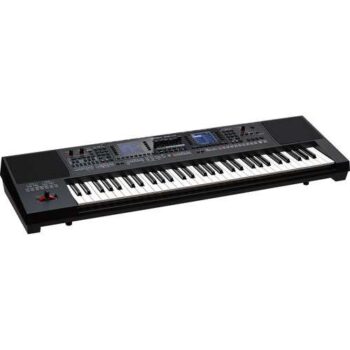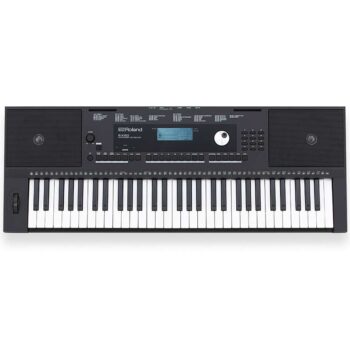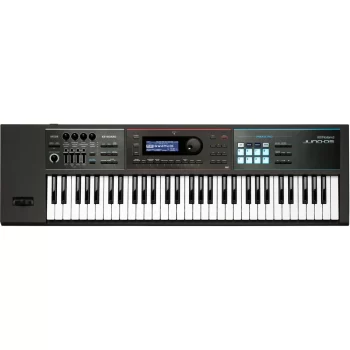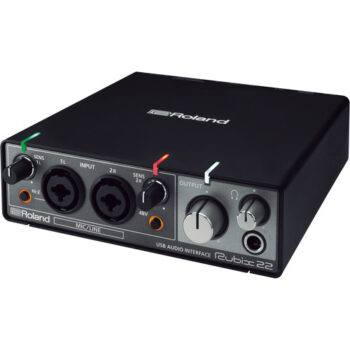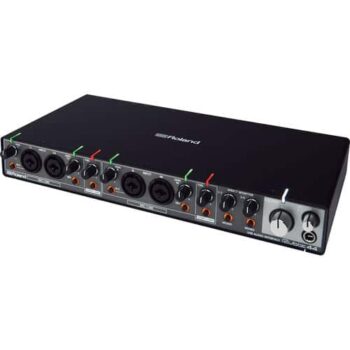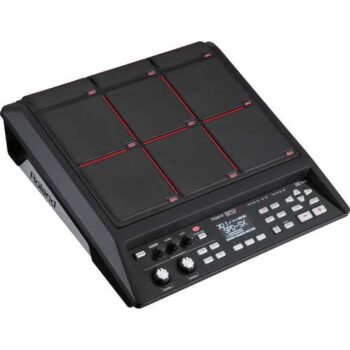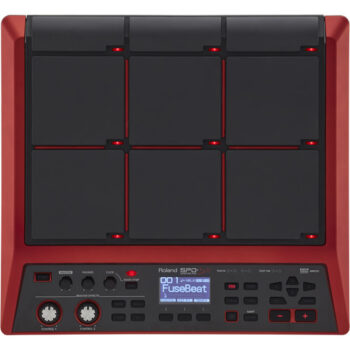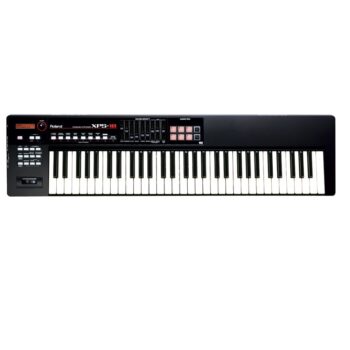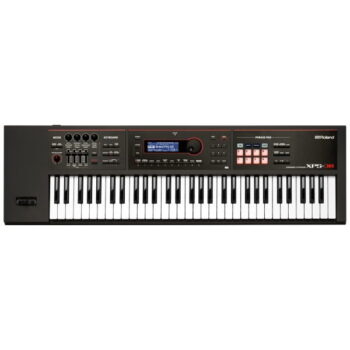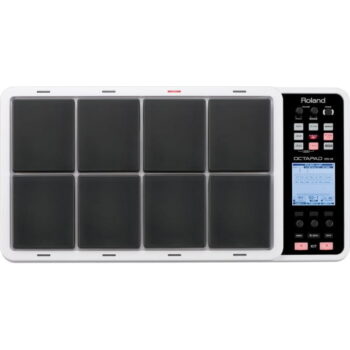1970s
Having created Ace Electronic Industries Inc in 1960, Ikutaro Kakehashi founded Roland in Osaka on April 18, 1972.[7] While rival companies Moog and ARP targeted professional musicians and academics, Kakehashi, who had no musical training, wanted to appeal to amateurs and hobbyists, and focused on miniaturization, affordability, and simplicity.[8]
The “Roland” name was selected for export purposes, as Kakehashi was interested in a name that was easy to pronounce for his worldwide target markets. The name was found in a telephone directory, and Kakehashi was satisfied with the simple two-syllable word and its soft consonants. The letter “R” was chosen because it was not used by many other music equipment companies, and would therefore stand out in trade show directories and industry listings. Kakehashi did not learn of the French epic poem The Song of Roland until later.[9]
With seven employees from his former company, a rented shed, and $100,000, Kakehashi built on his experience at Ace, introducing a drum machine, the TR-77 or Rhythm 77, as Roland’s first product, followed by the TR-33 and TR-55 released that same year. In 1973, Roland introduced the first compact synthesizer produced in Japan and the first synthesizer produced by Roland, the SH-1000, as well as their first non-preset synthesizer, the SH-3.[citation needed]
The company was also manufacturing effects pedals, introducing the RE-201 Space Echo in 1974, and expanding into guitar amplifiers the following year with the JC-60 and JC-120 Jazz Chorus, whose chorus circuit would become the first Boss Corporation product, the CE-1 Chorus Ensemble, the following year. In 1976, Roland introduced the semi-modular System 100 and the modular System 700 synthesizers.
ROLAND
Showing all 10 results
-
Keyboards and Synths, Proaudio, Roland
Roland E-X20 Arranger Keyboard
Key Features- No. of Keys: 61
- Key Type: Lever
- Control Panel: Digital
- Built in Speakers
- For: Intermediate Users
The new Roland E-X20 features an onboard selection of the same rich, responsive tones that you’ll find on our world-renowned top-spec digital pianos and synths costing over $1500.
SKU: E-X20 -
-
USB Audio Interfaces, Audio & Midi Interfaces, Proaudio, Roland
Roland Rubix22 – USB Audio Interface
Key Features
- 2 Inputs / 2 Outputs
- 2 Low-Noise Mic Preamps, 48V Phantom
- Hi-Z Input for Guitar
- 24-bit / 192 kHz Resolution
- Low Latency
- MIDI I/Os
- Extensively Shielded with Ground Lifts
- Powered Via USB
- Includes Ableton Live Lite
- Mac OS, Windows & iPad Compatible
SKU: Rx22 -
USB Audio Interfaces, Audio & Midi Interfaces, Proaudio, Roland
Roland Rubix44 4×4 USB Audio Interface
USB Audio Interfaces, Audio & Midi Interfaces, Proaudio, RolandRoland Rubix44 4×4 USB Audio Interface
Key Features
- 4 Inputs / 4 Outputs
- 4 Low-Noise Mic Preamps, 48V Phantom
- 2 x Hi-Z Inputs for Guitars
- 24-Bit/192 kHz Resolution
- Low Latency
- MIDI I/Os
- Hardware Compressor/Limiter
- Extensively Shielded, with Ground Lifts
- 6-Month Membership to Roland Cloud Pro
- Mac OS, Windows, iPad Compatible
Roland Rubix44 USB audio interface strikes the perfect mix between studio-caliber performance and portability, with a robust design, high fidelity sound, and strong capabilities that let you record almost anywhere.
SKU: RRX44 -
Drum and Pads, Proaudio, Roland
Roland SPD-SX Sampling Pad
Key Features- Nine Velocity Sensitive Drum Pads
- Internal Memory: 4GB
- USB Flash Memory and Mass Storage
- USB MIDI/Audio and Standard MIDI I/O
- Two 1/4″ Stereo/Mono Inputs
- Two 1/4″ Stereo Outputs & Headphone Out
- Two Dual-Trigger Inputs and Foot Switch
- Three Onboard Multi-Effects Units
- LED Status and Audio Level Indicators
- High Contrast Backlit LCD
The black Roland SPD-SX Sampling Pad allows you to easily sample, capture, assign and play drum sounds and audio phrases on nine velocity sensitive drum pads. Each pad has a dedicated LED indicator that shows pad status and audio-level activity during performance.
SKU: SPD-SX -
Drum and Pads, Proaudio, Roland
Roland SPD-SX Special Edition Sampling Pad with 16GB Internal Memory – Red
Drum and Pads, Proaudio, RolandRoland SPD-SX Special Edition Sampling Pad with 16GB Internal Memory – Red
Key Features- Nine Velocity Sensitive Drum Pads
- Internal Memory: 16GB
- USB Flash Memory and Mass Storage
- USB MIDI/Audio and Standard MIDI I/O
- Two 1/4″ Stereo/Mono Inputs
- Two 1/4″ Stereo Outputs & Headphone Out
- Two Dual-Trigger Inputs and Foot Switch
- Three Onboard Multi-Effects Units
- LED Status and Audio Level Indicators
- High Contrast Backlit LCD
The red Roland SPD-SX Special Edition Sampling Pad allows you to easily sample, capture, assign and play drum sounds and audio phrases on nine velocity sensitive drum pads.
SKU: RSPDSXSE -
Drum and Pads, Proaudio, Roland
Roland Octapad SPD-30
Key Features- Over 600 Built-In Sounds
- 30 Types of Built-In Multi-Effects
- Create & Layer Loops in Real Time
- Connect 4 Extra Drum Pads & Triggers
- Play MIDI Devices & Instruments via USB
With built-in sounds and effects, phrase looping capabilities and USB connectivity, the Roland Octapad SPD-30 percussion pad is a digital percussion instrument that can also be used to control software instruments and external MIDI devices.
SKU: OC30


